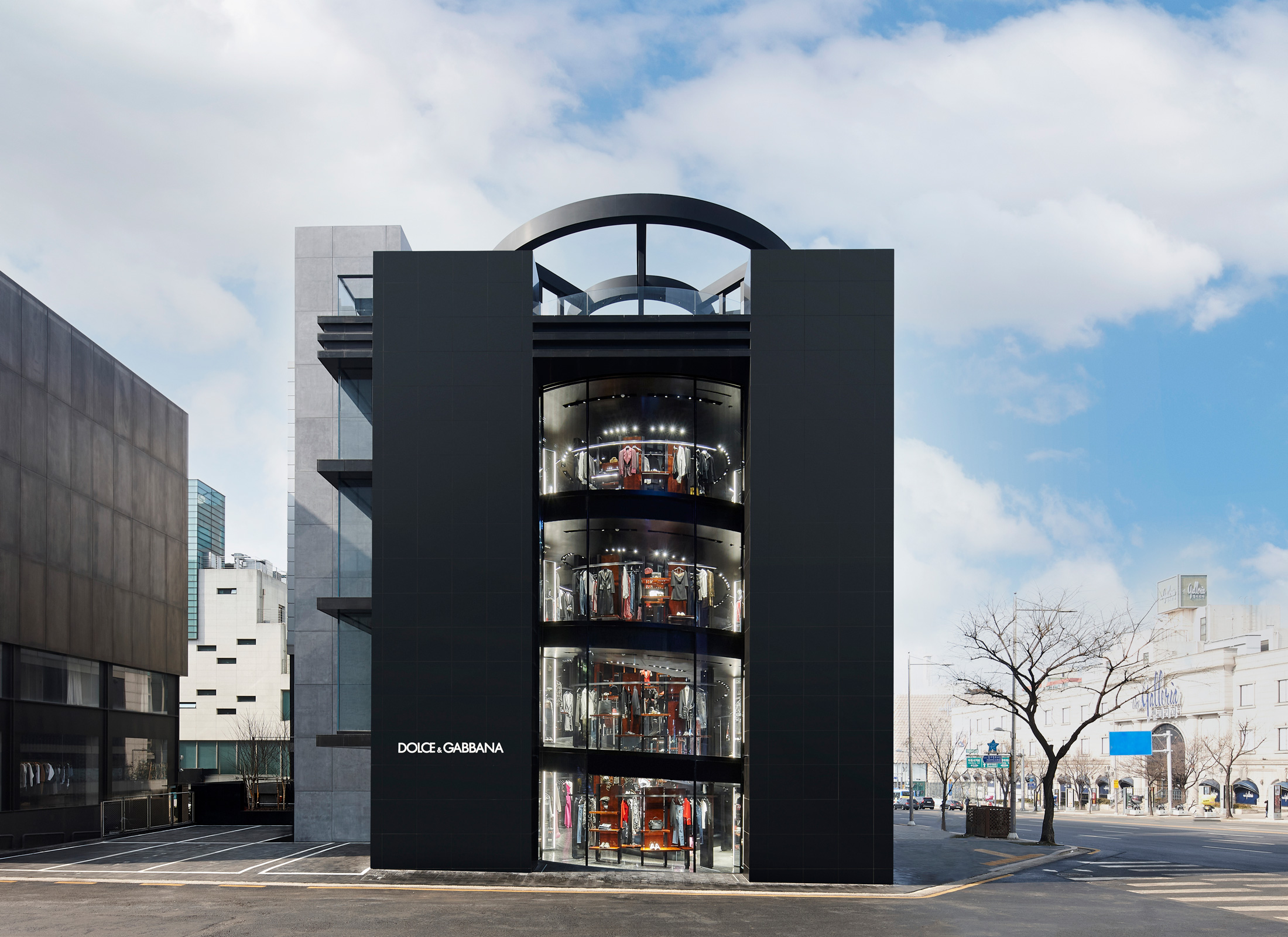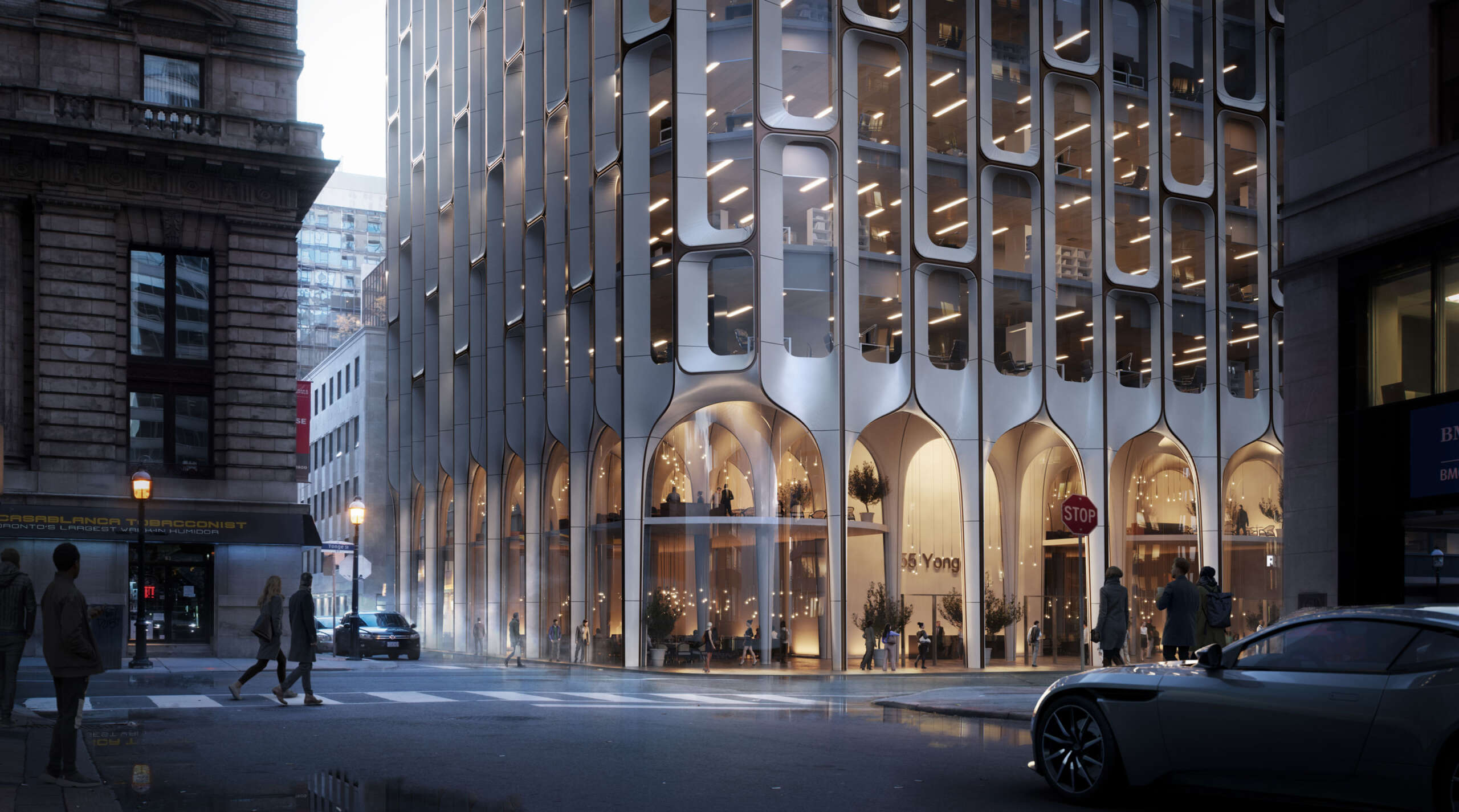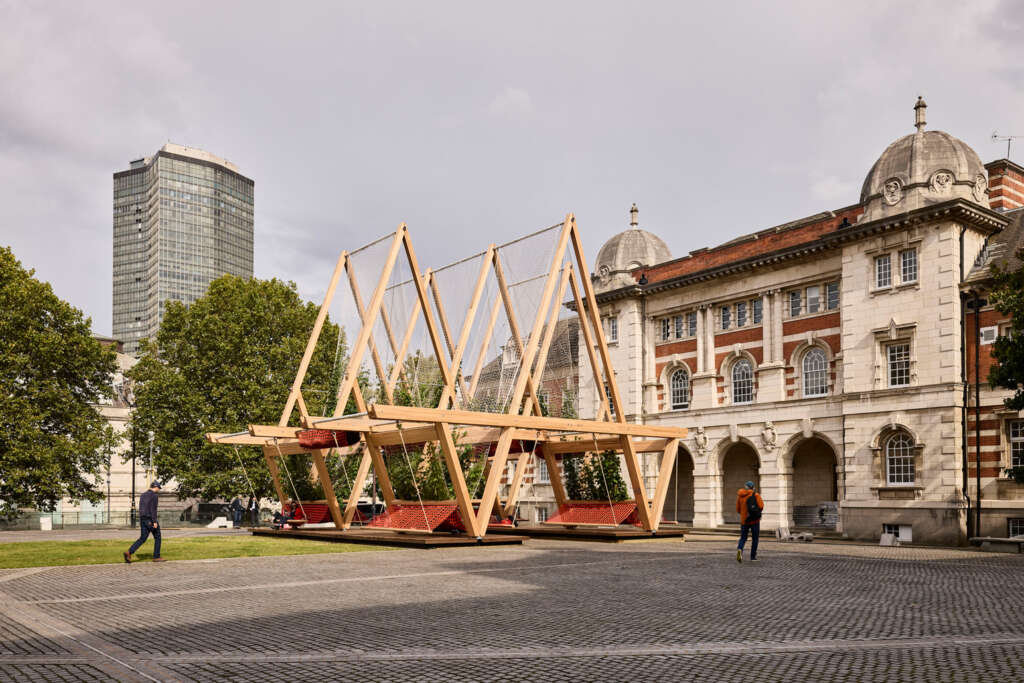
VERD° SPACE
Architect: OMC°C
Location: London, England
Year: 2024
Photographs: Petr Krejci
VERD° SPACE – More green, larger shade, smaller CO2 footprint
The following description is courtesy of the designers. Frankfurt-based OFFICE FOR MICRO CLIMATE CULTIVATION (OMC°C), has further evolved its VERD° System launched last year, and introduces three usage-specific variations of the system onto the market. The first of these is VERD° SPACE, a free-standing variation, whose diagonally suspended plant sails create maximum shaded areas. Modules can be combined to create larger custom structures.
VERD° SPACE is an ideal solution for shading public spaces and throughways. It can be positioned freely in public urban spaces and is statically autonomous. During the summer it provides shade and cooler temperatures, improving the quality of living for people in urban spaces. The foundations do not need to be anchored in the ground and can serve as seating accommodation. By arranging the plant sails at an angle, the resulting shaded area can be maximized – an installation with 10 nets and a base area of 10 x 14 metres, for example, will create a shaded area of around 850 m2. The structure is close to 10 metres high, while its passage height of 3 metres allows for a flexible use of the spanned space.
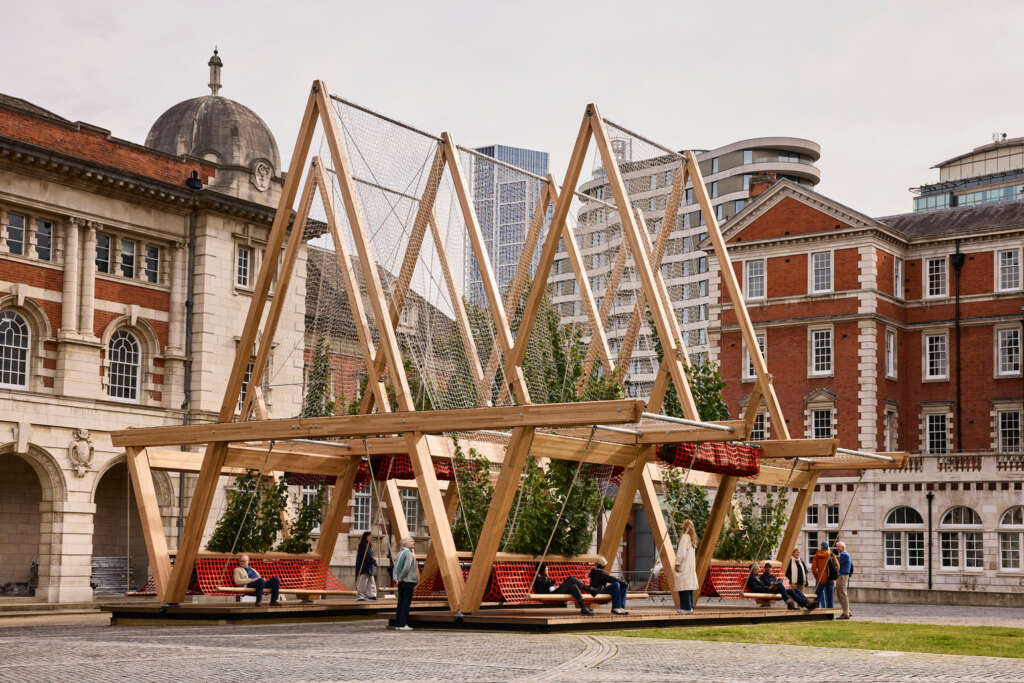
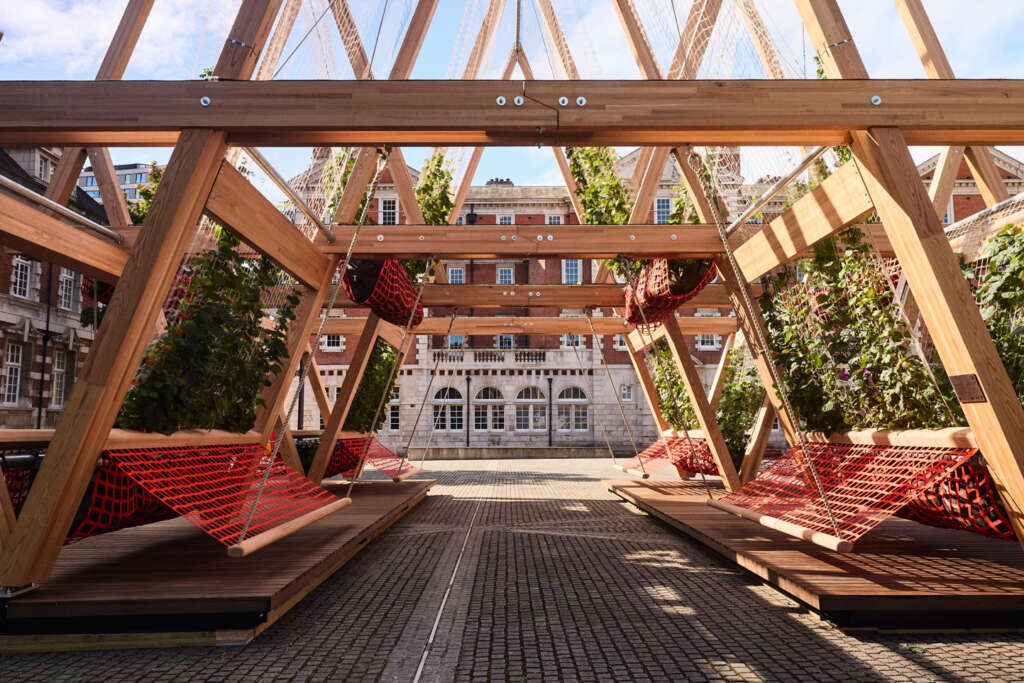
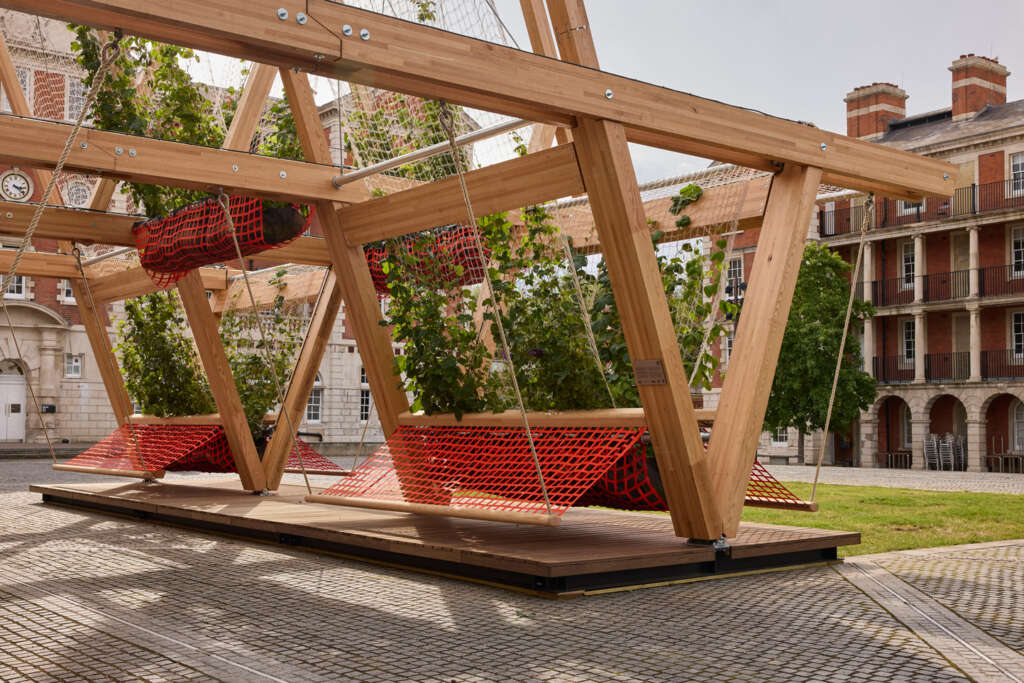
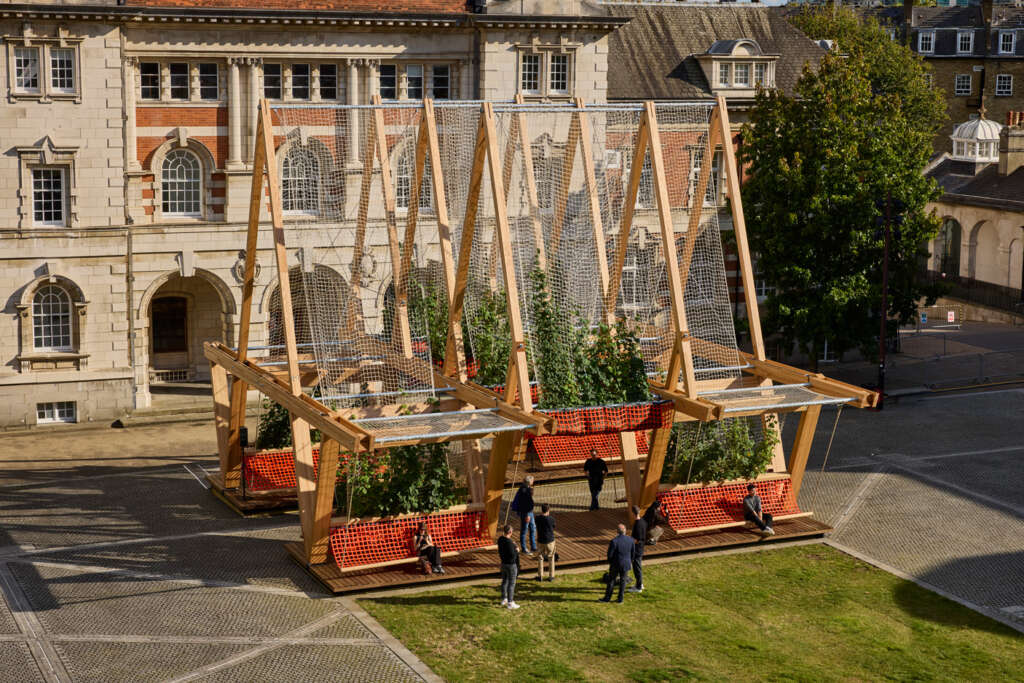
VERD° SPACE is available in two versions: VERD° SPACE | BRIDGE and VERD° SPACE | TRIANGLE. BRIDGE is a lightweight construction made of steel and wood which can be extended in all directions. With its straight-lined design, it augments streets and public spaces in an understated way – in summer as a lush, floating green space; after the harvesting of the plant-covered nets in autumn and until the fresh planting in spring as a highly aesthetic urban structure.
In terms of construction and structural engineering, TRIANGLE has been designed for the material wood. The lightweight structure is made up of slender beams that reinforce each other in triangular connections. Apart from certified wood and biodegradable plants, TRIANGLE contains textile planters and nets made of flax. This means that it consists of 80 % renewable raw materials. With its sculptural, self-contained form, the shading green catches the eye in public spaces, and creates cool, refreshing spaces for city dwellers.
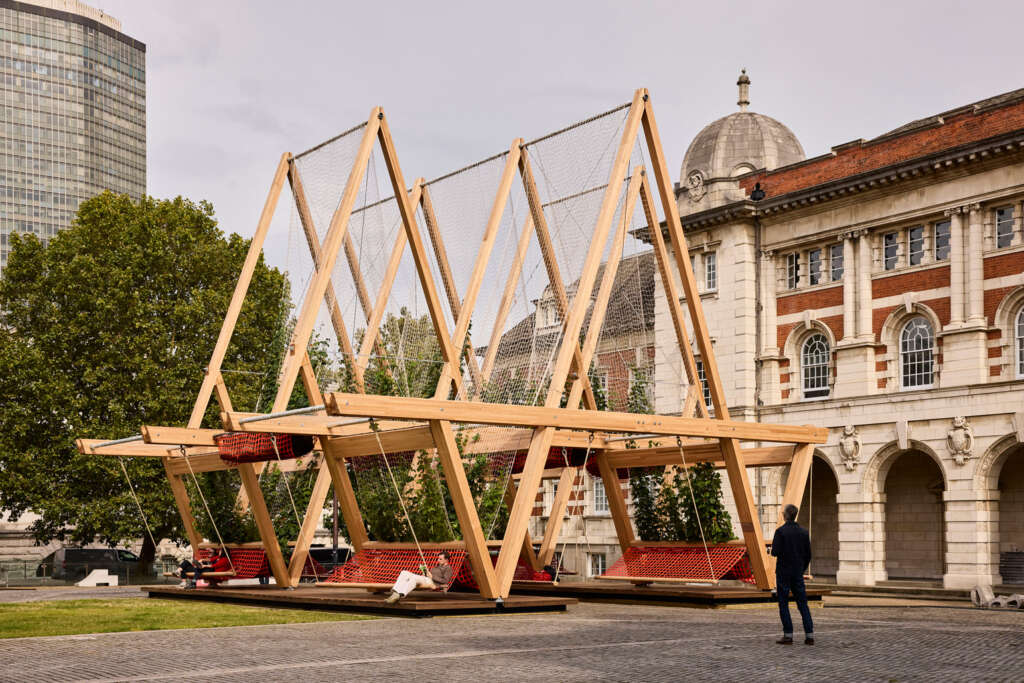
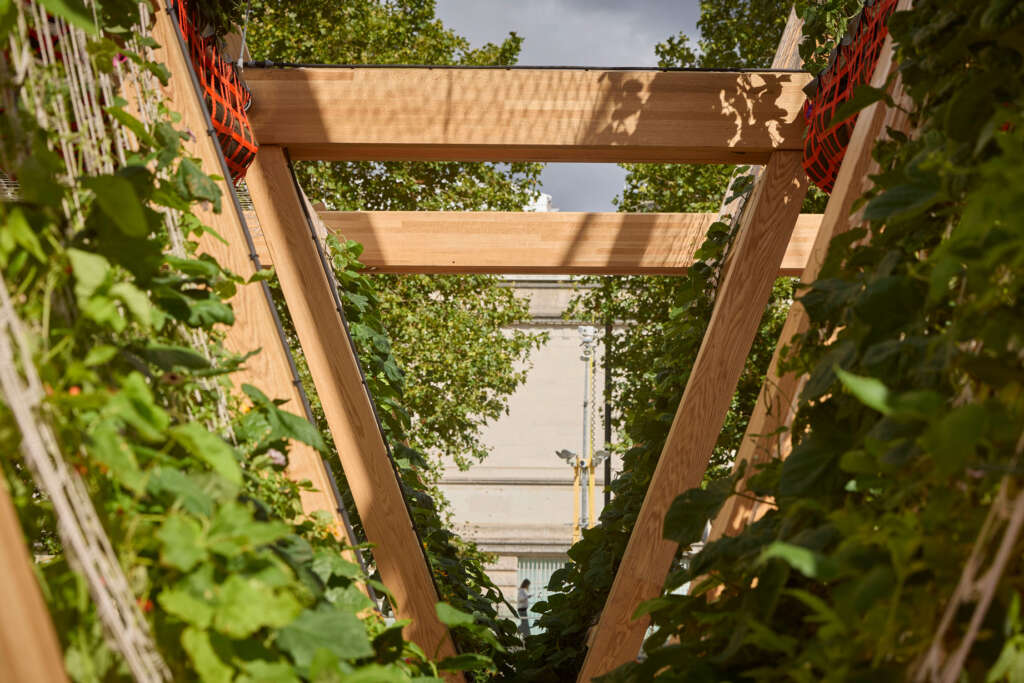
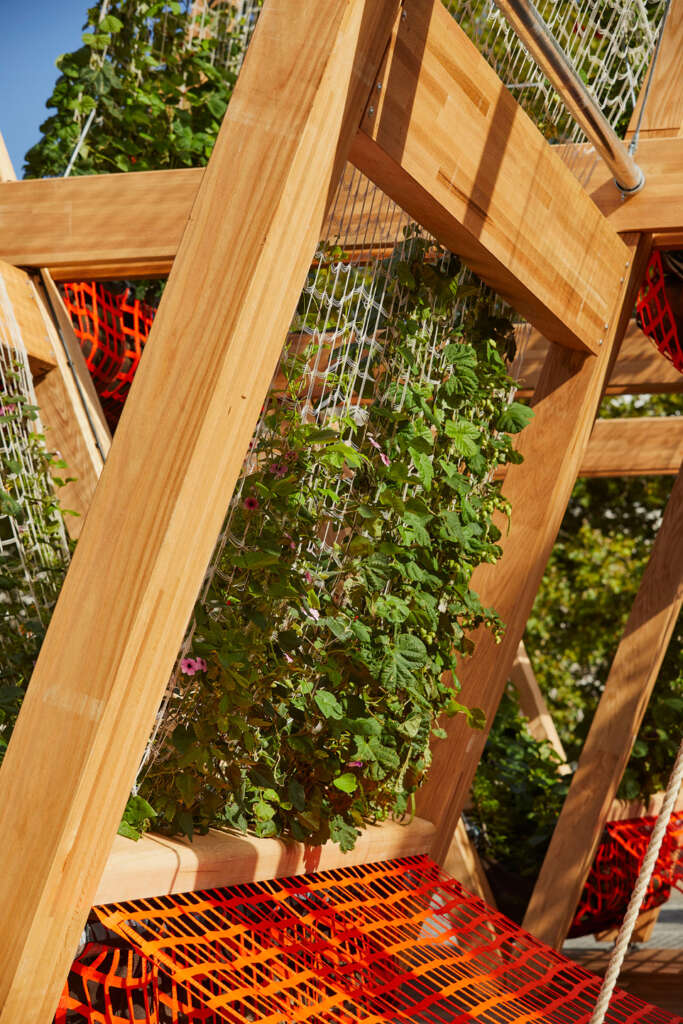
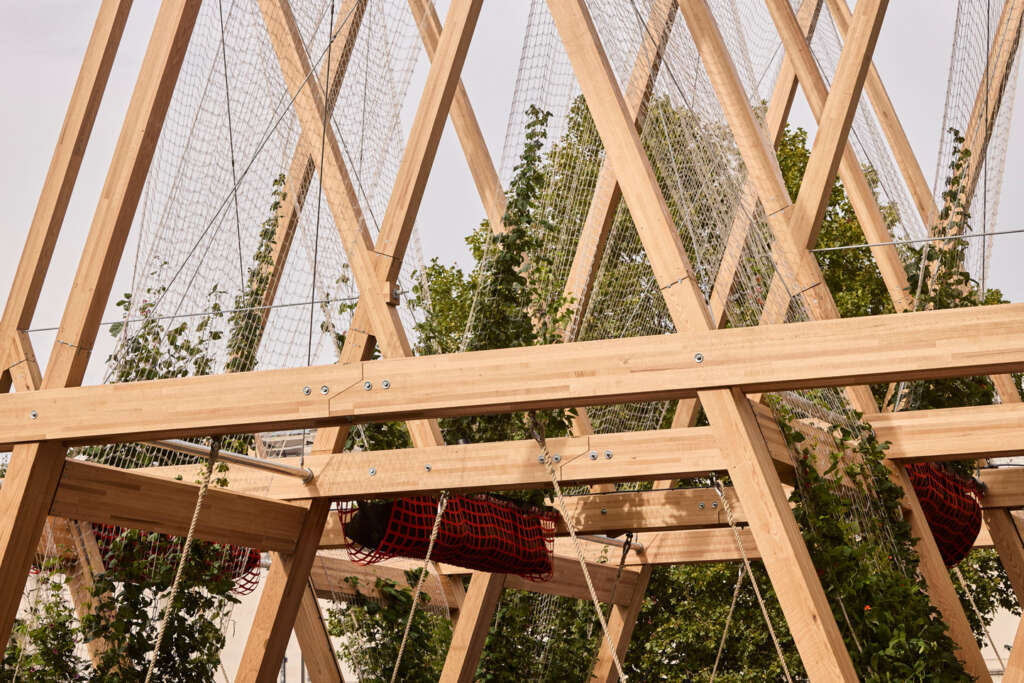
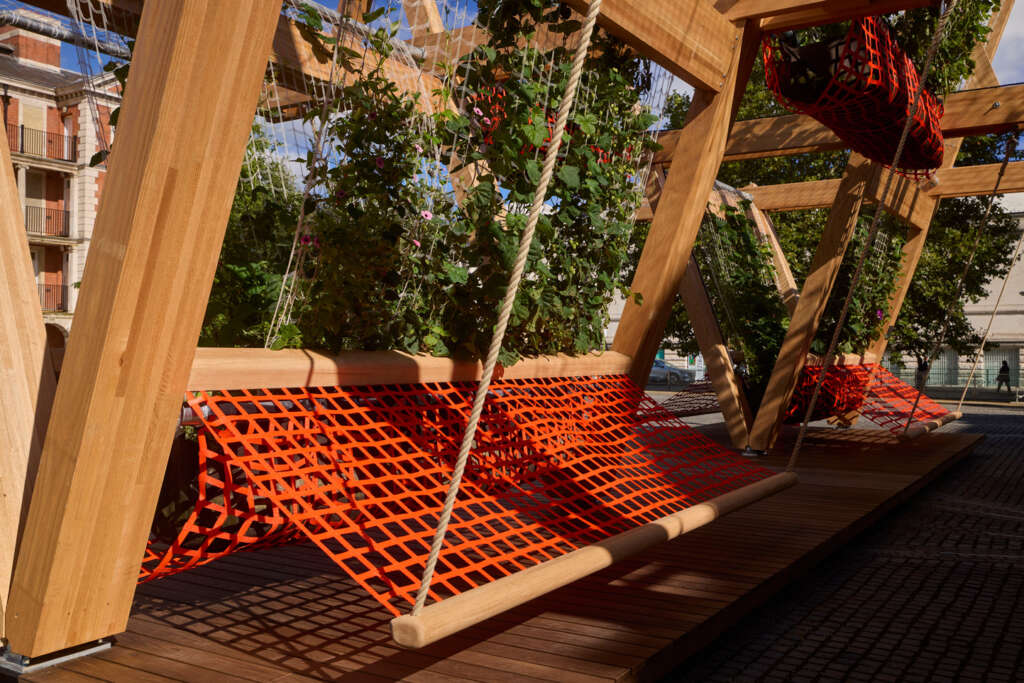
The evolution of VERD° SPACE
Founded by Nicola Stattmann and Carlotta Stoll in 2021, OFFICE FOR MICRO CLIMATE CULTIVATION (OMC°C) presented the first prototype of VERD° in 2023: The first modules were installed in the courtyard of the Senckenberg Naturmuseum in central Frankfurt – and were immediately accepted and used by passers-by and visitors throughout the summer. The test drive provided OMC°C with valuable insights regarding statics, the creation of shade and constructive details. The main conclusion being that the system as such works: the plants grow up to one metre per week, they flower, provide shade, cool down the surrounding temperature, bind CO2 and provide an additional habitat for a variety of insect species.
It also became clear that different types of VERD° structures are needed for different usage scenarios
and requirements. To achieve this, the VERD° System was systematically developed further in collaboration with Diez Office and the structural engineers from Bollinger+Grohmann. This resulted in two product variants in addition to VERD° SPACE: VERD° KIDS which is designed in particular for outdoor play areas in nurseries and schools, and VERD° FACADE which provides shade and cooling for new and existing buildings.
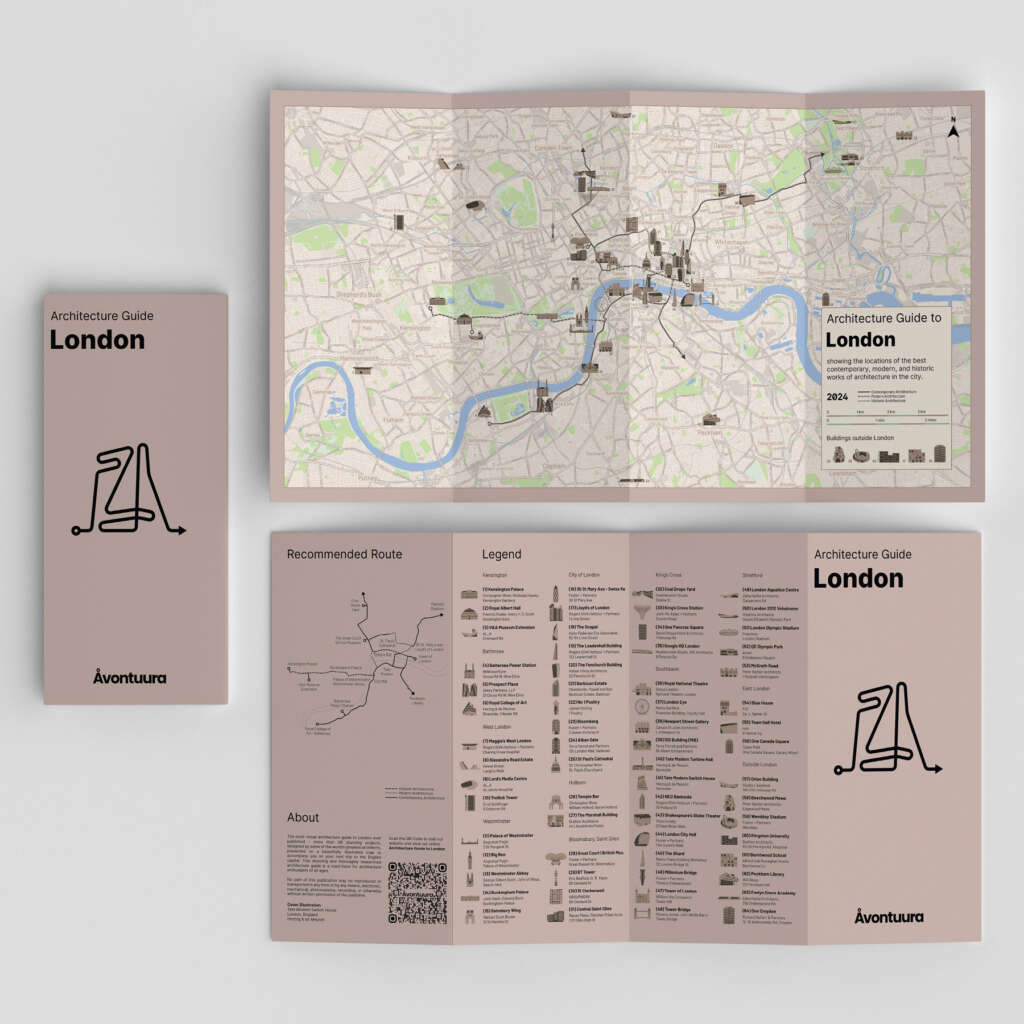
Architecture Guide to London
Explore all our guides at avontuura.com/shop
VERD° SPACE goes London Design Festival
For the London Design Festival 2024, Diez Office in collaboration with OMC°C and the American Hardwood Export Council (AHEC) have developed a version of VERD° SPACE made of American red oak. The project, called ‘Vert’, embodies a transformative approach to urban development by providing an example of a sustainable, simple path to a cooler, greener city. ‘With rising temperatures, increasing heatwaves and dwindling biodiversity in cities around the world, we urgently need to think urban development in a new way. Vert is an experimental proposal for a modular structure that addresses both issues,’ explains Stefan Diez. ‘Vert’ is on display in the courtyard of Chelsea College of Arts for the whole of London Design Festival [editor note: now ended].
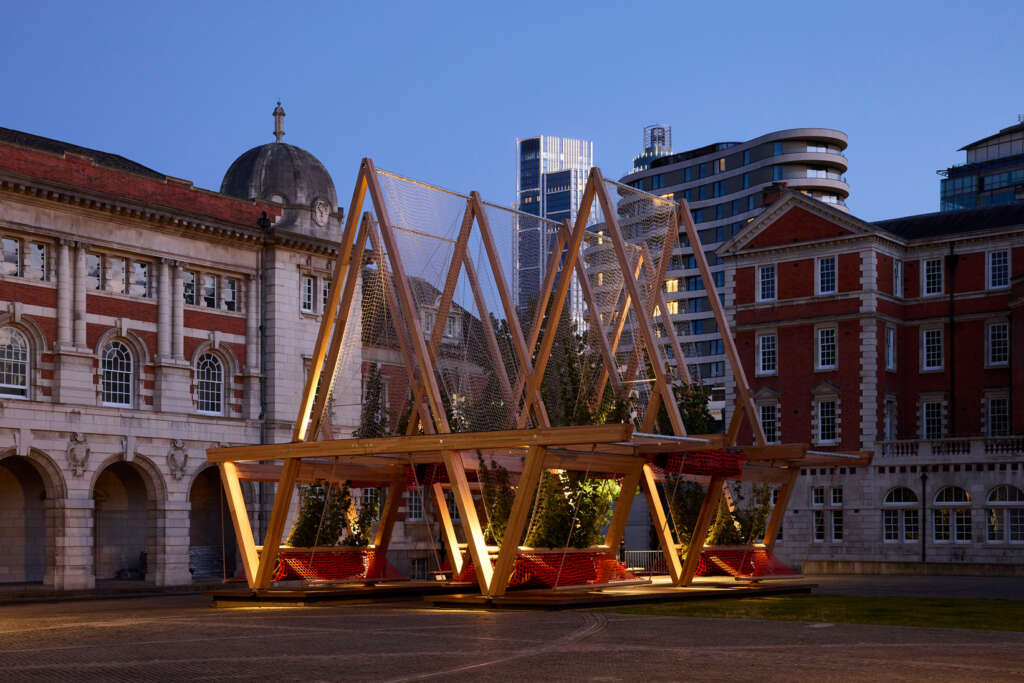
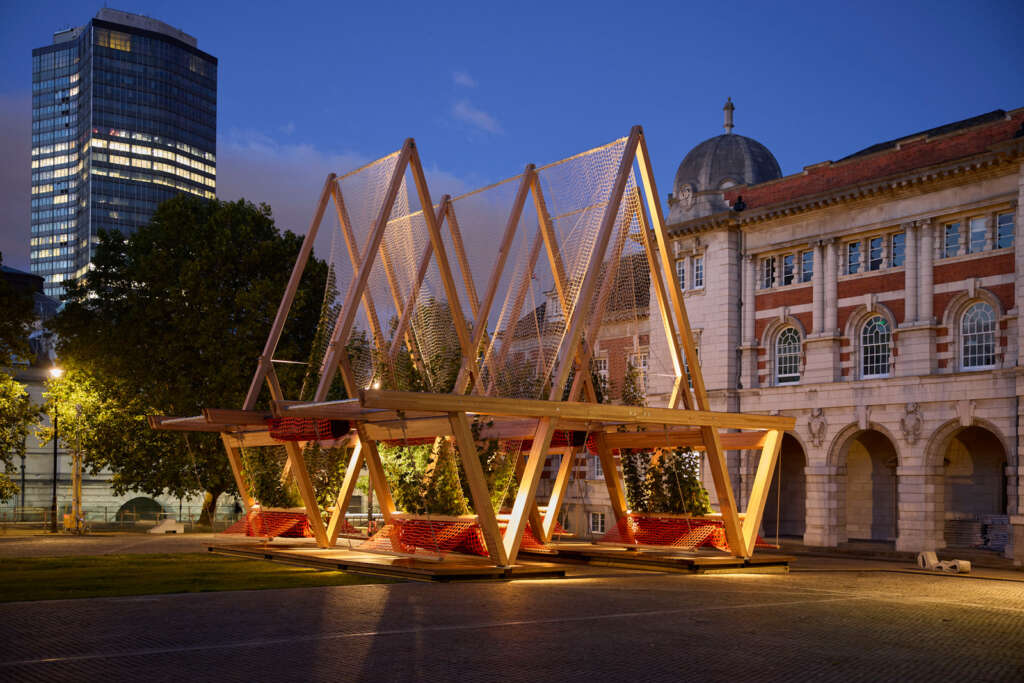
The structure consists of wooden triangles into which biodegradable nets are suspended. As with all
variations of the VERD° System, they serve as climbing aids for fast-growing climbing plants which
are rooted in textile planters placed at the bottom of the nets. About 20 different plant species
clamber up the sails and form a living ecosystem which contributes to the local biodiversity, serves as
a habitat for important insect populations, embellishes the urban landscape and provides a cool,
inviting space where visitors can meet and relax – ‘Vert’ even offers suspended hammocks for extra
comfort.


